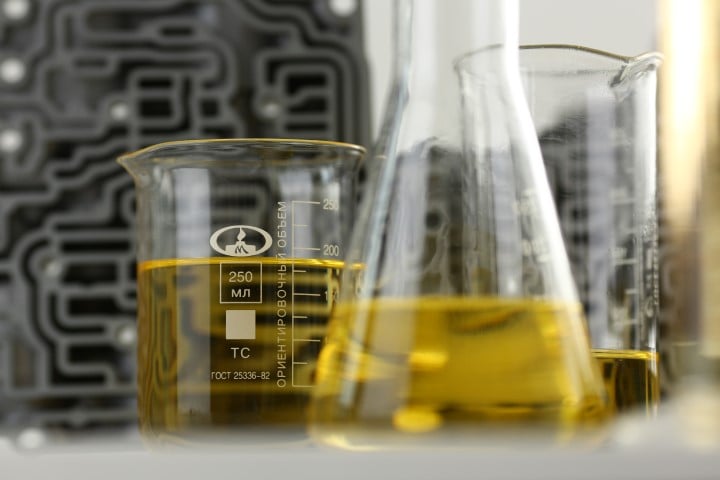How Biofuels Have Changed the Fuels We Use Today: Part 1
As a service to our customers, dealers and friends, Bell Performance hosts quarterly webinars on fuel topics of interest to them and their customers....
3 min read
Erik Bjornstad : Jan 4 2019

We’re heading toward two decades out from the big change in diesel fuel specifications of 2006 – the lowering of the on-road sulfur limit from 500 ppm to 15 ppm. Actually, the change was supposed to happen in 2006-2007, but it didn't fully take effect across all diesel fuel use sectors until at least 2010.
That regulatory change gave us the ultra-low sulfur diesel fuel we see as the market standard today. As the change was impending, the market predicted big problems with the fuel. With almost two decades years of hindsight in our pockets, let’s compare what happened vs. what they feared would happen when the change was announced. Was it as bad as they thought? Let's find out.

The Concern: The concerns were legitimate at first. Removing the sulfur (which happens at the refinery level) destroys some of the coordinating compounds that contribute to the diesel fuel having sufficient lubricity to protect injectors and fuel pumps. You could see the problem simply by running HFRR lubricity tests on the ULSD fuel (they failed). The industry was concerned for good reason.
The Reality: When the smoke cleared, there weren't as many problems as they feared, and that's because the industry reacted in a couple of key ways. The first reaction was the creation of better lubricity additive chemistries, added to the fuel after refining. Then came the RFS (Renewable Fuels Standard) and the broad influx of biodiesel into the nation’s fuel supply. The addition of just 2-3% biodiesel raises the ULSD’s lubricity score back above what it was before they took the sulfur out. And just about any on-road diesel fuel that you buy today has up to 5% biodiesel already in it. So, problem solved.
The Concern: The removal of sulfur from the diesel fuel was done by hydrotreating at the refinery level, enabling refineries to produce diesel fuel with a maximum sulfur level of 15 ppm. Sulfur was long considered to be an inhibiting factor for microbes in fuel; some described the situation as sulfur being a “natural biocide”. Take out the sulfur and you’d have a fuel with little or no resistance to its natural microbial enemies. This would lead to big problems in the industry, especially for users who stored fuel for long-term or emergency backup use.
The Reality: This problem did appear to a greater extent than they first thought. But it wasn't for the reasons one might think.
The idea that sulfur is a natural biocide isn’t technically correct. Sulfur is a macronutrient that organisms need to live. Microbes may not like to be around excessive amount of sulfur, but it doesn’t kill microbes by its mere presence. If it did, that is what would fit the definition of a biocide, and sulfur is not that. One could argue that sulfur was a biostat, which is something that inhibits growth but doesn’t overtly kill living organisms. We know that microbes can live around sulfur because high sulfur fuels get microbe problems all the time.
How did this relate to the question at hand? What they found in the ten years following 2016 was that ULSD fuels were highly susceptible to developing severe microbial problems. But it wasn’t because of the reduced sulfur levels like they first thought. Instead, the blame lay in other effects that the regulations had - not only limiting sulfur content but also aromatic content.
The simple explanation would go like this. Both gasoline and diesel fuels are made up of molecules that can be divided into two classes – aromatics and aliphatics. There have always been limits on the percentage of aromatic molecules you could have in a given fuel, because aromatic molecules, when burned, contribute to air pollution. When the new fuel regulations came out that capped sulfur content at 15 ppm, lower limits on aromatic content were also put into place at the same time. The problem is that if you have fewer aromatics, you have more aliphatic molecules in their place. And microbes much prefer to munch on aliphatic fuel molecules for their food sources.
The removal of 97% of the diesel fuel sulfur did indeed create fuel that had tremendous microbe problems. It created diesel fuel with much less resistance to microbial contamination, both from the lack of sulfur and lower aromatic content, but also from something we haven't yet mentioned - ULSD has a greater affinity for water. And water is one of the essential elements needed for microbes to grow and thrive.
If you have stored ULSD fuel that you haven’t checked in a while, it will be worth your while to examine what’s going on inside your tank. Today’s ultra-low sulfur diesel fuels need to have a lot more attention paid to them than the fuels from the past.
As a service to our customers, dealers and friends, Bell Performance hosts quarterly webinars on fuel topics of interest to them and their customers....
Back in the day, the storage life of both diesel and gas was measured in years, not months. That’s not the case anymore. Once you get past 6 months...

Up until recently, if you had diesel fuel for your boat or generator, or any kind of “off-road” engine, you didn’t have to worry about sulfur.